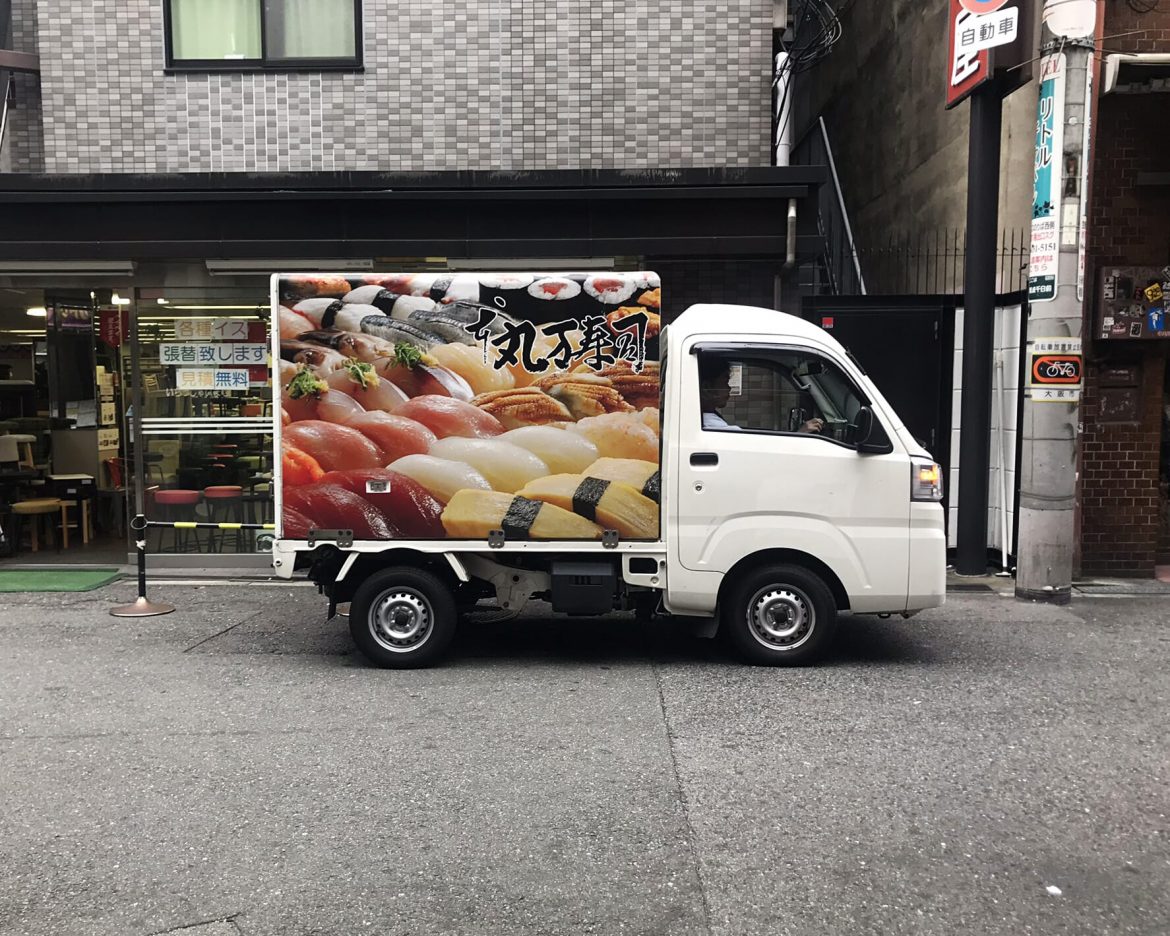Japan is a photographer’s treasure trove. With rich biodiversity and bustling cities, there’s so much packed into one small country. But all too often, visitors don’t bother to venture outside of Tokyo city limits.
That’s not to say that Tokyo isn’t worth spending time exploring. Filled with bright colors, pristine parks, and smokey alleyways, I could have spent another month or two exploring the city with my camera. Easily. Even so, there’s so much more to this island nation that all too often goes unseen by visitors.
Related Article: Photographers Checklist: Tokyo
Photographing Japan is an exciting opportunity, but it can be an intimidating feat to map out. If you happen to be a first-time visitor, here are a few spots worth adding to your itinerary!
Best Places to Photograph in Japan
- PhotoWorkout’s Must-See Spots in Japan
- 1. Osaka
- 2. Kyoto
- 3. Kobe
- 4. Fujikawaguchiko
- 5. Matsumoto
- 6. Nara
- 7. Hakone
- Mt. Fuji Photography Tips
- Where to Get the Best Views of Mt. Fuji
- 1. Lake Kawaguchi
- 2. Mt. Fuji Panoramic Ropeway
- 3. Chureito Pagoda
- 4. Oshino Hakkai
- 5. Hakone
- 6. Shizuoka City
- 7. Shibazakura Festival
- 8. Lake Motosu
- 9. Lake Yamanaka
A Note on Our Locations
Unfortunately, most of us don’t have the luxury to travel indefinitely. Our trip was just under three weeks, and we still saw only a fraction of what Japan had to offer.
There are plenty of spots that we did not have the opportunity to explore because they’re a bit further out and less accessible. For instance, Hokkaido to the north and Okinawa to the south both offer some unbelievable photo opportunities. However, getting there involves purchasing additional airfare, taking a ferry, or renting a car and driving for many hours. Realistically, this isn’t an option for everyone.
Since most travelers arrive and depart from one of Tokyo’s two airports, we decided to keep our selections within a 4-hour radius of the city. Fortunately, thanks to the country’s efficient public transit, it’s possible to get pretty far when you have a limited amount of time to spare!
If you hope to cover as much ground as possible, consider grabbing a JR Pass. For a few hundred dollars, you can purchase unlimited rides on Japan Rail for one or two-week increments. Those serious about photographing Japan will find that this magic ticket is one of the single most important items you could have on hand.
PhotoWorkout’s Must-See Spots in Japan
1. Osaka
Great for: Street photography, fashion photography
Distance from Tokyo: 3 hrs via Shinkansen
Although Osaka is Japan’s second-largest city (and has all the amenities that come with that title), it’s all too often skipped over by visitors. Understandably, the hustle and bustle of Tokyo is enough city for most people. However, Osaka and Tokyo feel entirely different.

Osaka has a reputation for being friendly, fun-loving, and colorful for good reason. Just take a stroll through Dōtonbori and you’ll see why. Bright neon lights make the area great for photography after dark, and the waterway running through the center of the shopping district creates dynamic reflections. Plus, the high foot traffic makes it an ideal spot to people watch.

Even a rainy day in Osaka has promise. If you don’t mind crowds, check out the Osaka Aquarium Kaiyukan. It’s easy to spend an afternoon among the dreamy lights and brightly colored fish. What’s more, it’ll likely be the only opportunity you’ll get to photograph a living, breathing whale shark.

Whether you want classic castles or towering skyscrapers, vintage shops, or amusement parks, Osaka’s got it. Choose your adventure, pack your camera, and great images are sure to follow!
2. Kyoto
Great for: Architectural photography, nature photography
Distance from Tokyo: 2.5 hrs via Shinkansen
Kyoto provides a blast from the past, offering a glimpse of Japan’s rich history. Home to thousands of shrines and temples dating as far back as the 6th century, it’s a gold mine for any fan of Japan’s intricate architecture. Perhaps the most famous is the Fushimi Inari-Taisha Shrine, nestled at the base of a mountain and flanked by 1,000 bright red torii gates. Even if the history doesn’t interest you, the lush green trail weaving through a series of lesser shrines up the mountain is well-worth hiking.
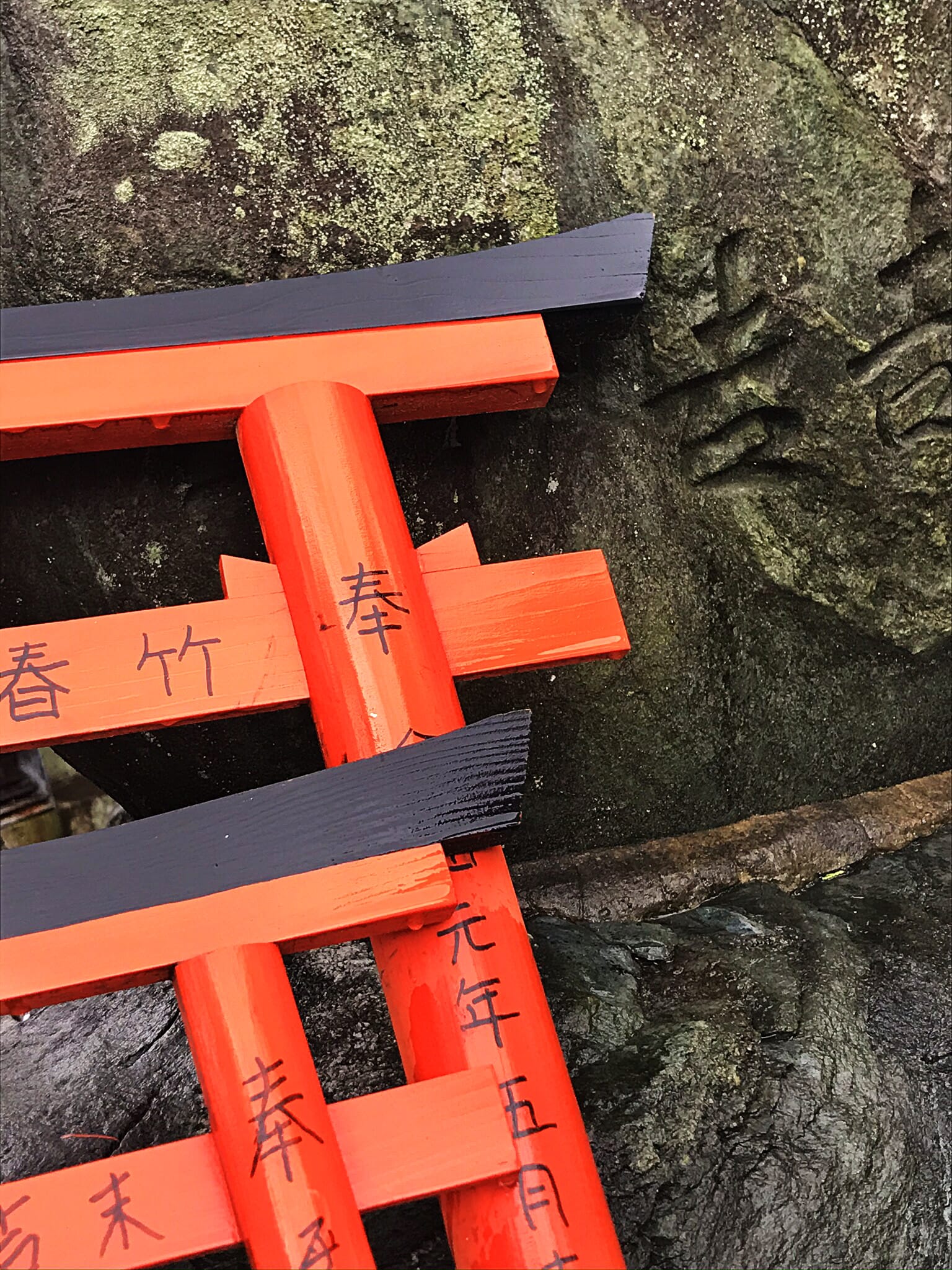
Visitors should make a point to spend time exploring the bamboo forest in neighboring Arashiyama. While it’s sometimes swarmed with tourists, the gorgeous paths provide a perfect backdrop for unique images. If crowds aren’t your thing, take a hike into the mountains and visit Arashiyama Monkey Park. It’s a great opportunity to get up close and personal with wild macaques, especially if the more famous Jigokudani Monkey Park isn’t an option.
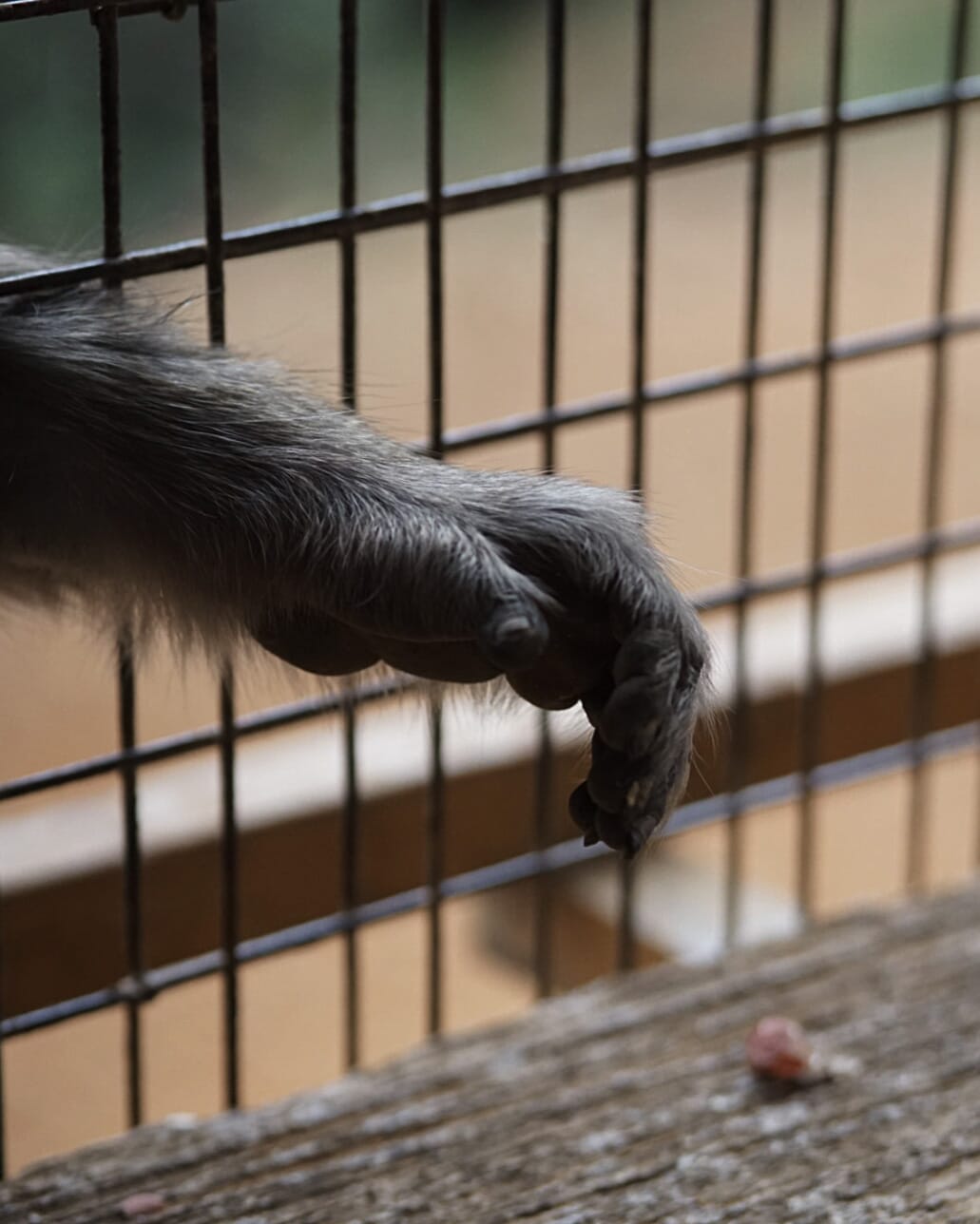
Even with all of that excitement, I think that my favorite part of this city was simply sitting around the Kamo River at sunset. With live music in the air and small smokey izakayas nearby, the relaxed atmosphere melts away any reservations you may have about photographing in an unfamiliar place.
3. Kobe
Great for: Street photography
Distance from Tokyo: 3 hrs via Shinkansen
Most people don’t think about this city much outside of its famous beef. But Kobe’s got a lot more to offer than one might expect. Although we ended up there by chance due to Typhoon Hagibis rail repairs, the unexpected stop yielded excellent photographs.
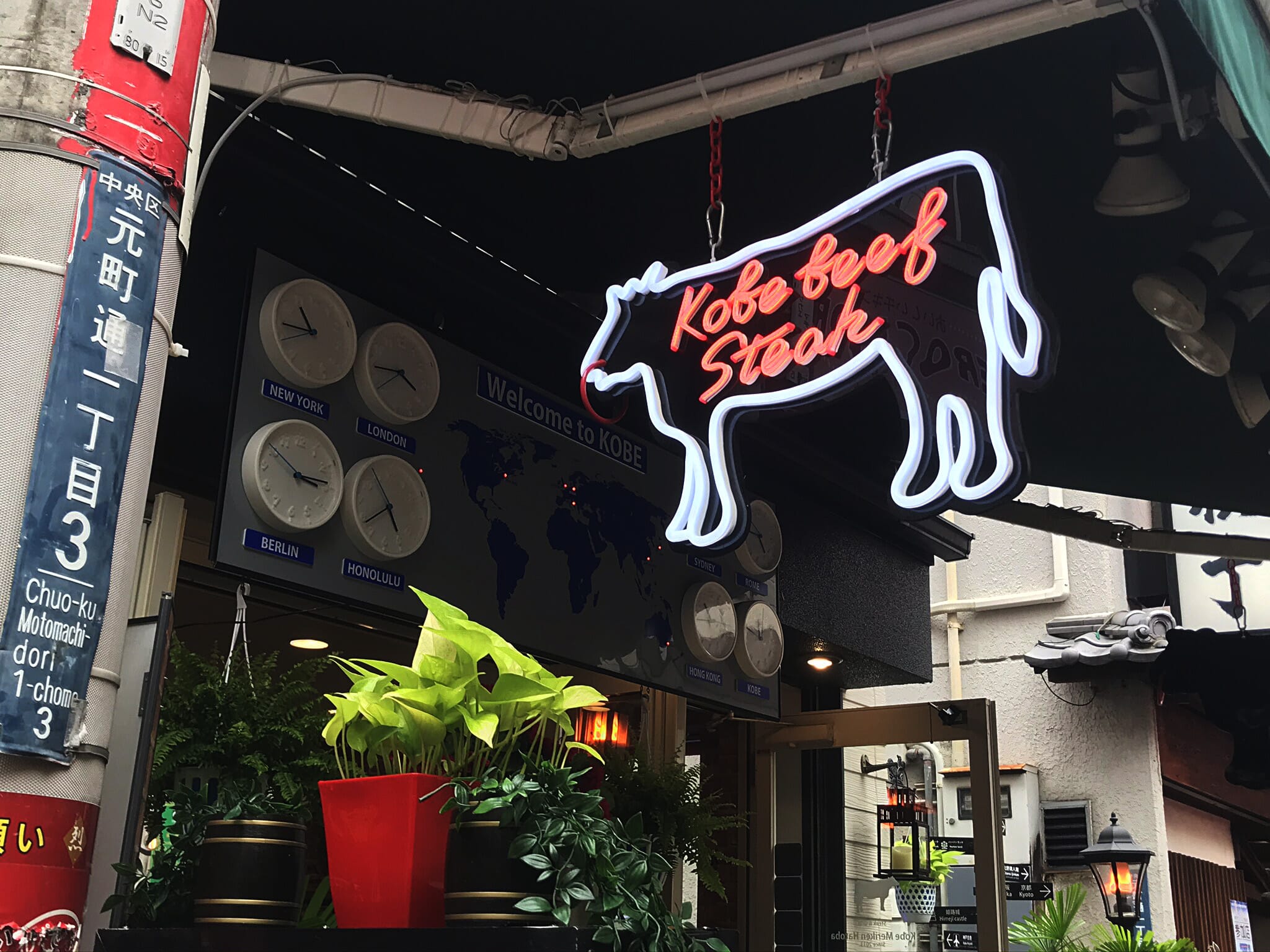
Kobe’s close proximity to the sea made it a vital port city for many years, contributing to a sizable foreign national population. This meeting of cultures truly makes Kobe something special. I could’ve spent an entire day photographing the vibrant Nankin-machi (Chinatown) neighborhood. Incidentally, the food booths here may have had some of the best bites of the entire trip.
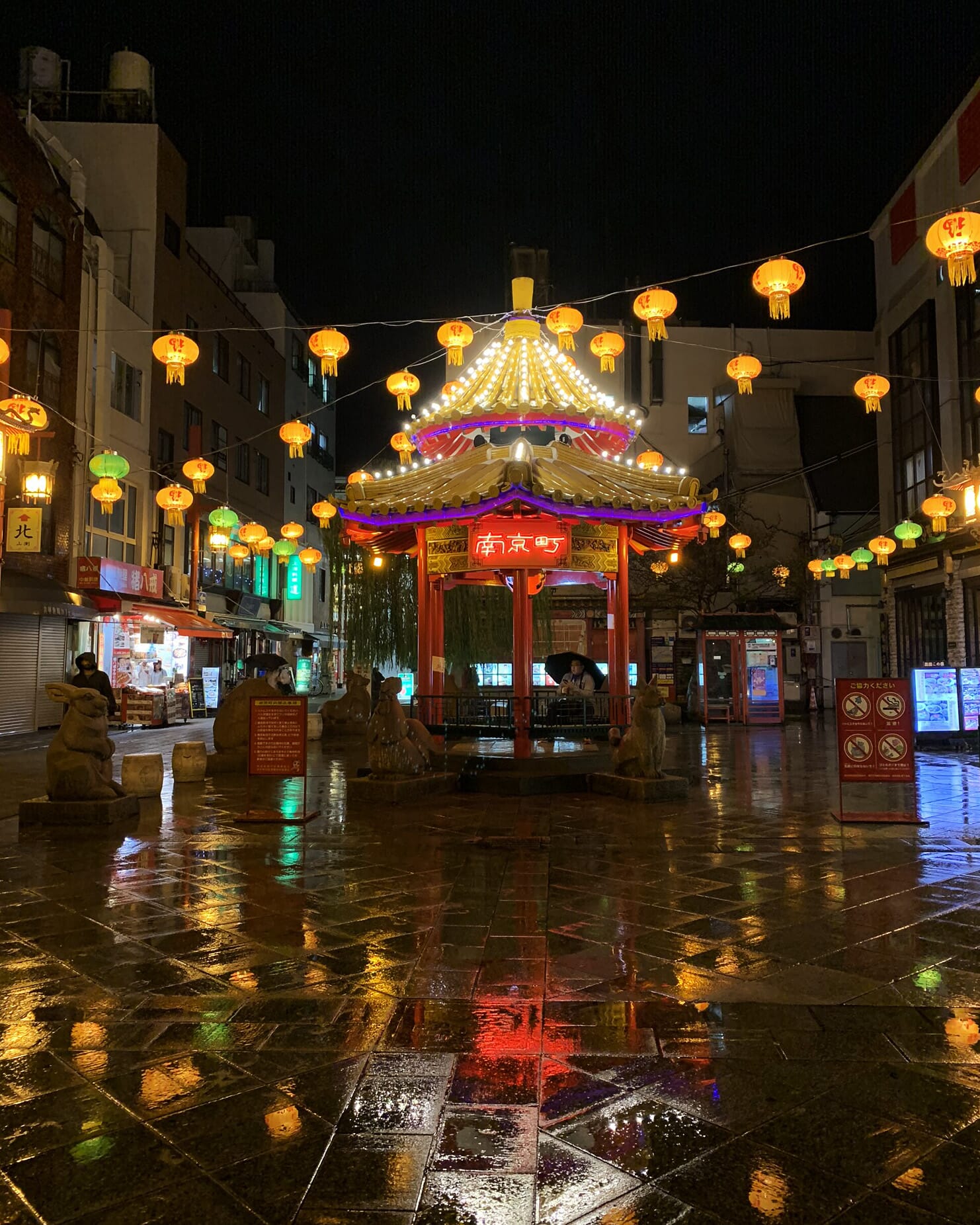
While Kobe isn’t as flashy to outsiders as Kyoto or Osaka, this industrial city has some hidden gems. If you’re looking for a break from the usual images tourists take, this cosmopolitan melting pot is worth stopping by.
4. Fujikawaguchiko
Great for: Landscape photography
Distance from Tokyo: 2.5 hrs via bus
Honestly, you can’t go wrong planning a trip to the Fuji Five Lakes Region. We spent a night on the banks of Kawaguchiko, but all the villages situated along Fuji’s five lakes provide unbelievable views of the mountain. The travel is a bit more arduous than the smooth rides of the Shinkansen, but you won’t be disappointed once you arrive.
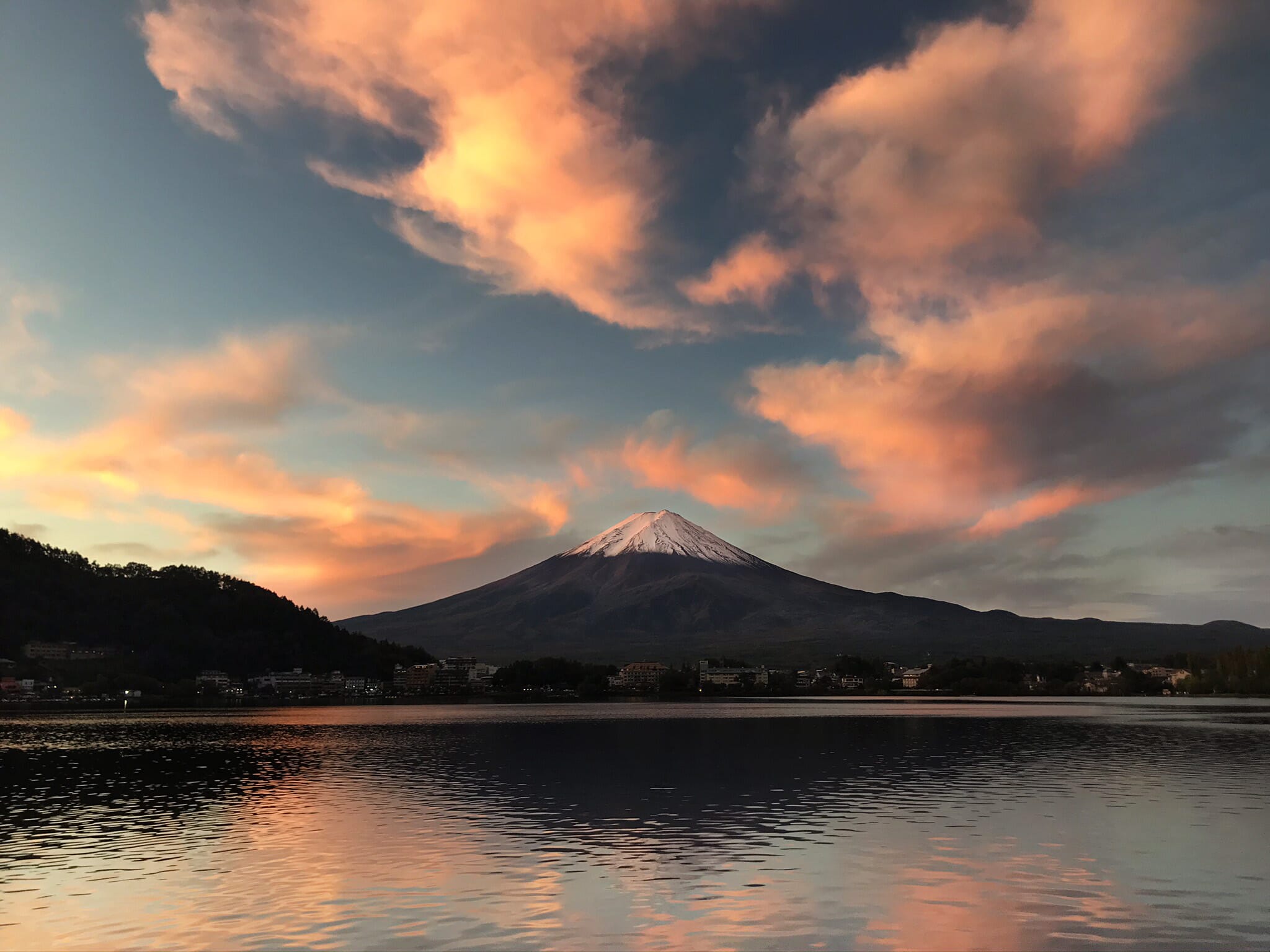
If you’re all about outdoor photography, Fujikawaguchiko’s location at the foot of Mt. Fuji makes it an excellent launch point for hikers and climbers. However, one of this small town’s greatest advantages is its panorama ropeway. While you need to pay a small fare to ride, this amenity allows riders to get a great vantage point without breaking a sweat (or risking their gear’s safety!)

One word of advice? If you have the energy and opportunity to get up early, do so. Sunrise over Mt. Fuji is a view you’ll treasure for the rest of your life.
5. Matsumoto
Great for: Architectural photography, landscape photography
Distance from Tokyo: 3.5 hrs via Japan Rail
One of the greatest things about traveling and photographing Japan has to be the amazing biodiversity. A trip to Nagano prefecture allows you a taste of the country’s mountainous region without straying too far from Tokyo.
Matsumoto in particular is a welcome break from the high-speed metropolitan areas to the south. You won’t find blinding bright lights or swarms of people here. The people here were friendly and curious to chat with us in a way that many big-city folks were not.
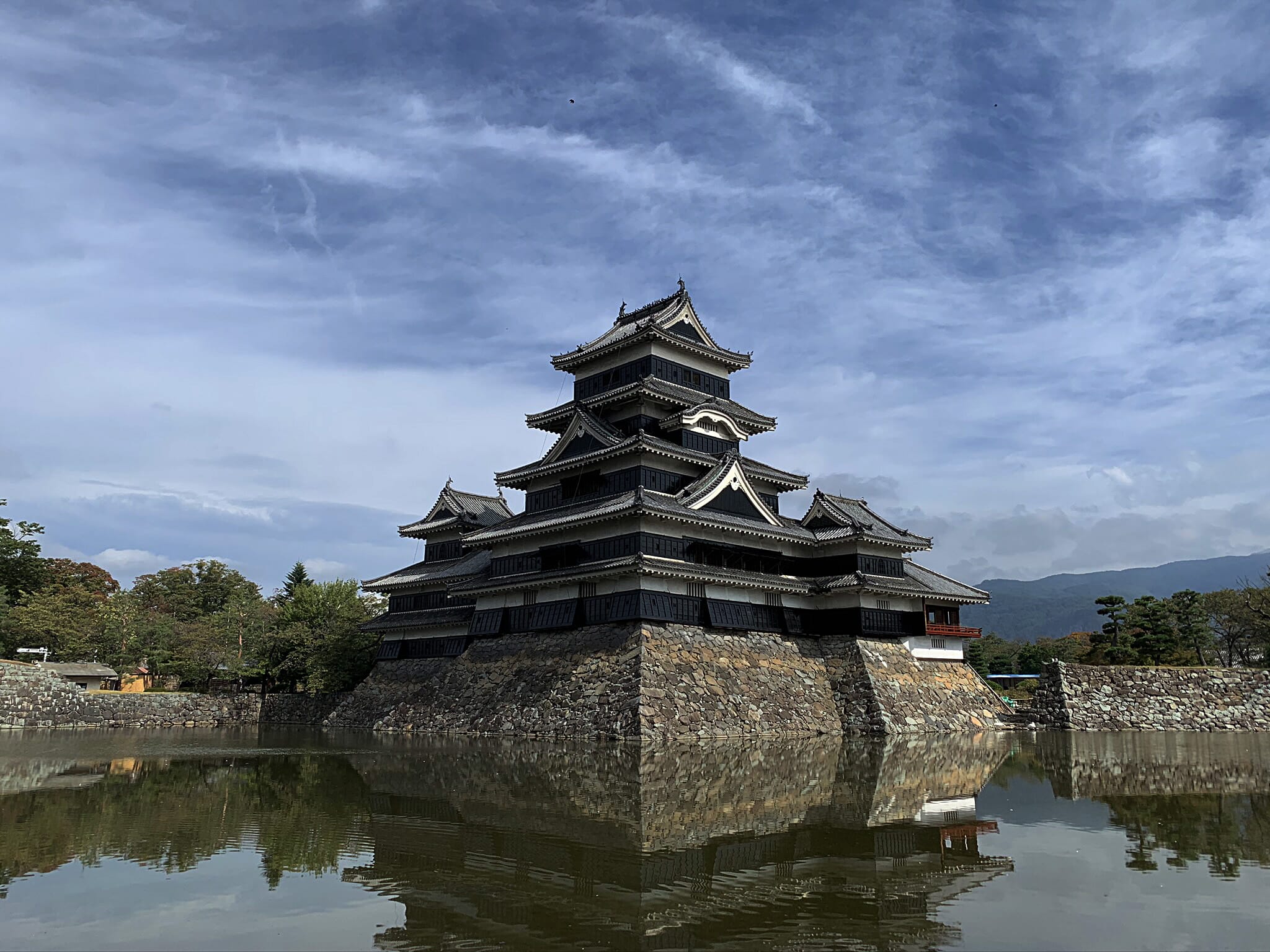
That said, despite the relaxed atmosphere, there are still some absolutely incredible sights to see in the area. The most prominent within the city is Matsumoto Castle, a massive structure surrounded by a dramatic reflecting moat. Everyone in town will ask you if you’ve visited the iconic spot for good reason.
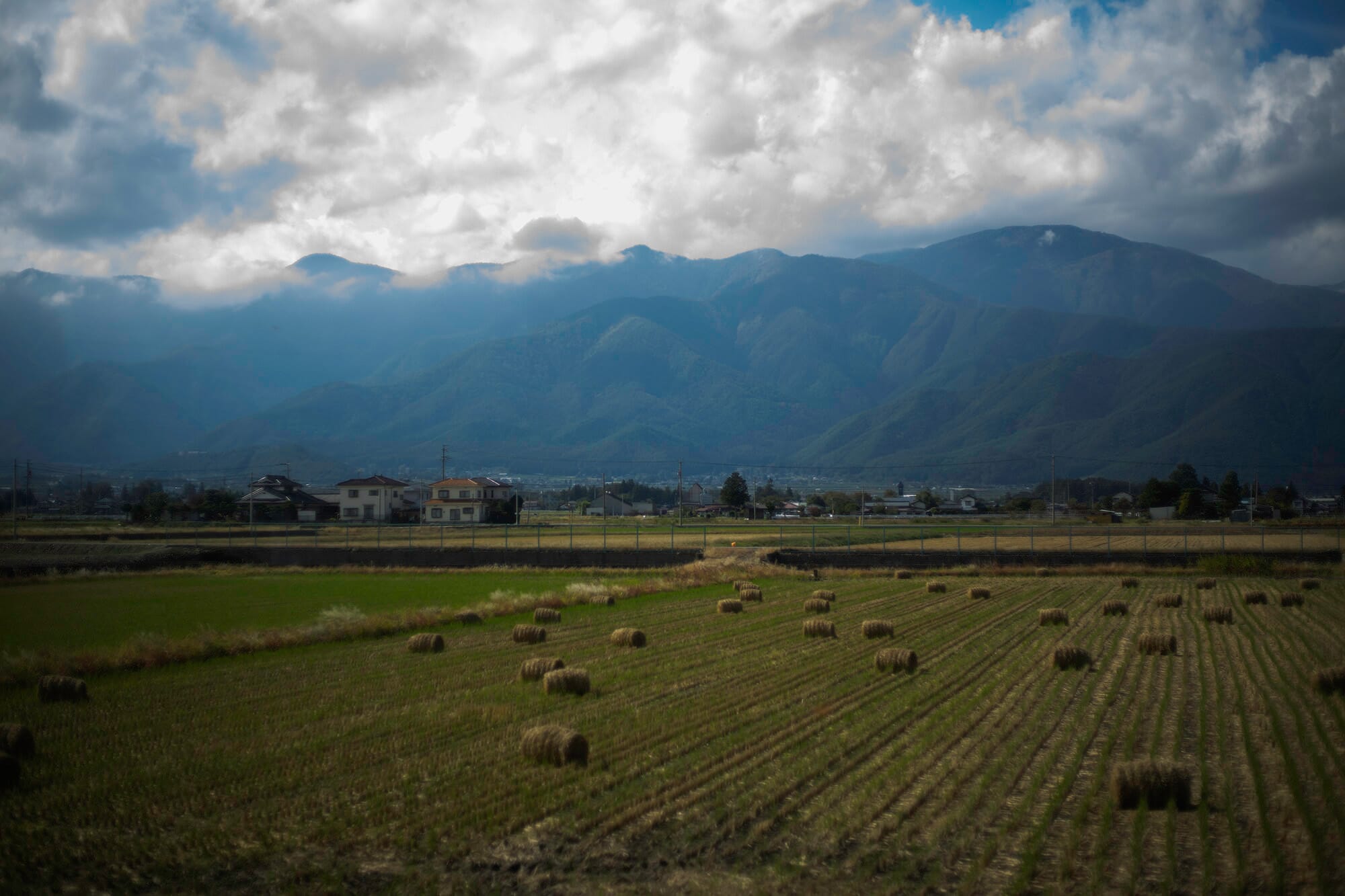
However, if you want to get the full scope of photographing Japan, consider going a bit off the beaten path. If you take a 20-minute ride on the local commuter rail, you can visit the world’s largest wasabi farm in Azumino City. Along the way, you’ll be sure to draw some inspiration from the dramatic vistas of the rural countryside.
6. Nara
Great for: Nature photography, architectural photography
Distance from Tokyo: 4 hrs via Shinkansen/Japan Rail transfer
In all honesty, any guide to photographing Japan should dedicate some time to Nara. Yes, it is a popular destination for tourists, which might be a buzzkill for some. But this unique area is unlike anywhere else on Earth.
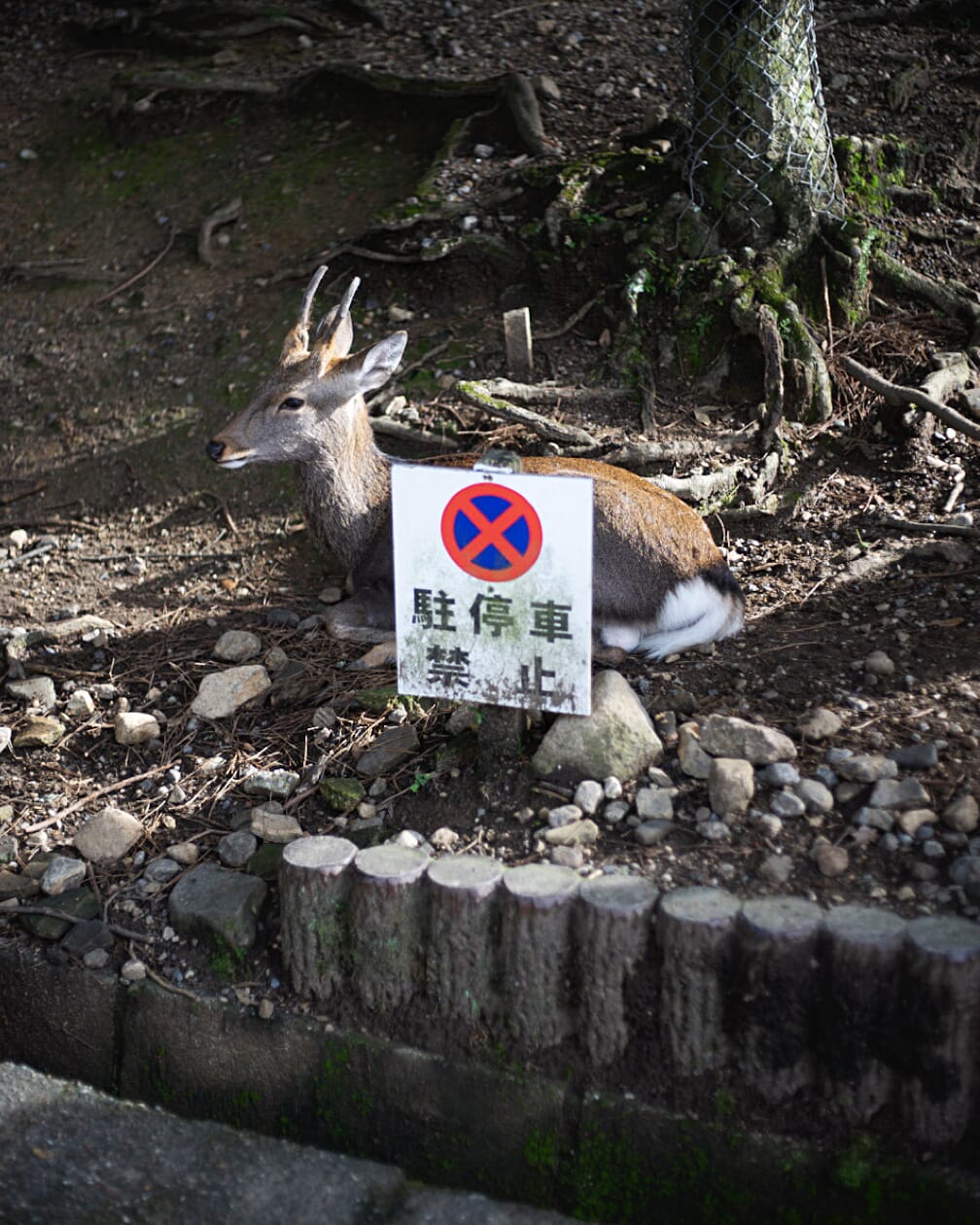
For starters, the town is filled with tame deer. According to Shinto tradition, animals are considered sacred, so they’re not fearful of humans. You can even feed the deer crackers by hand if you want! For anyone that loves photographing animals, you won’t come across many opportunities like this close to your subjects.
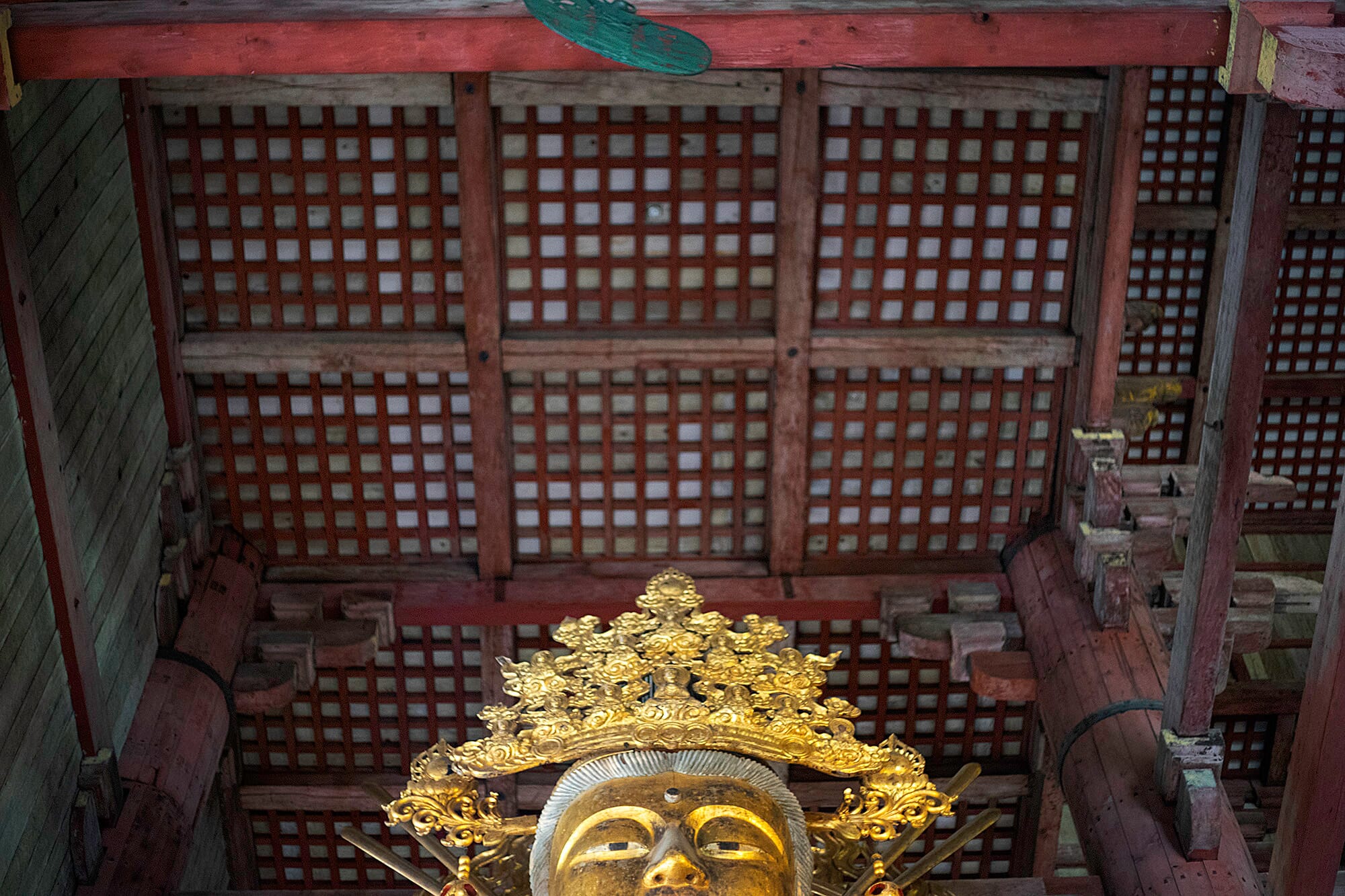
As if that weren’t enough, the backdrop is absolutely unbeatable. Nara is home to Tōdai-ji, a UNESCO World Heritage Site and the country’s largest Buddhist Temple. In addition, scattered throughout town are bonsai gardens, reflecting pools, and structures dating back one thousand years.
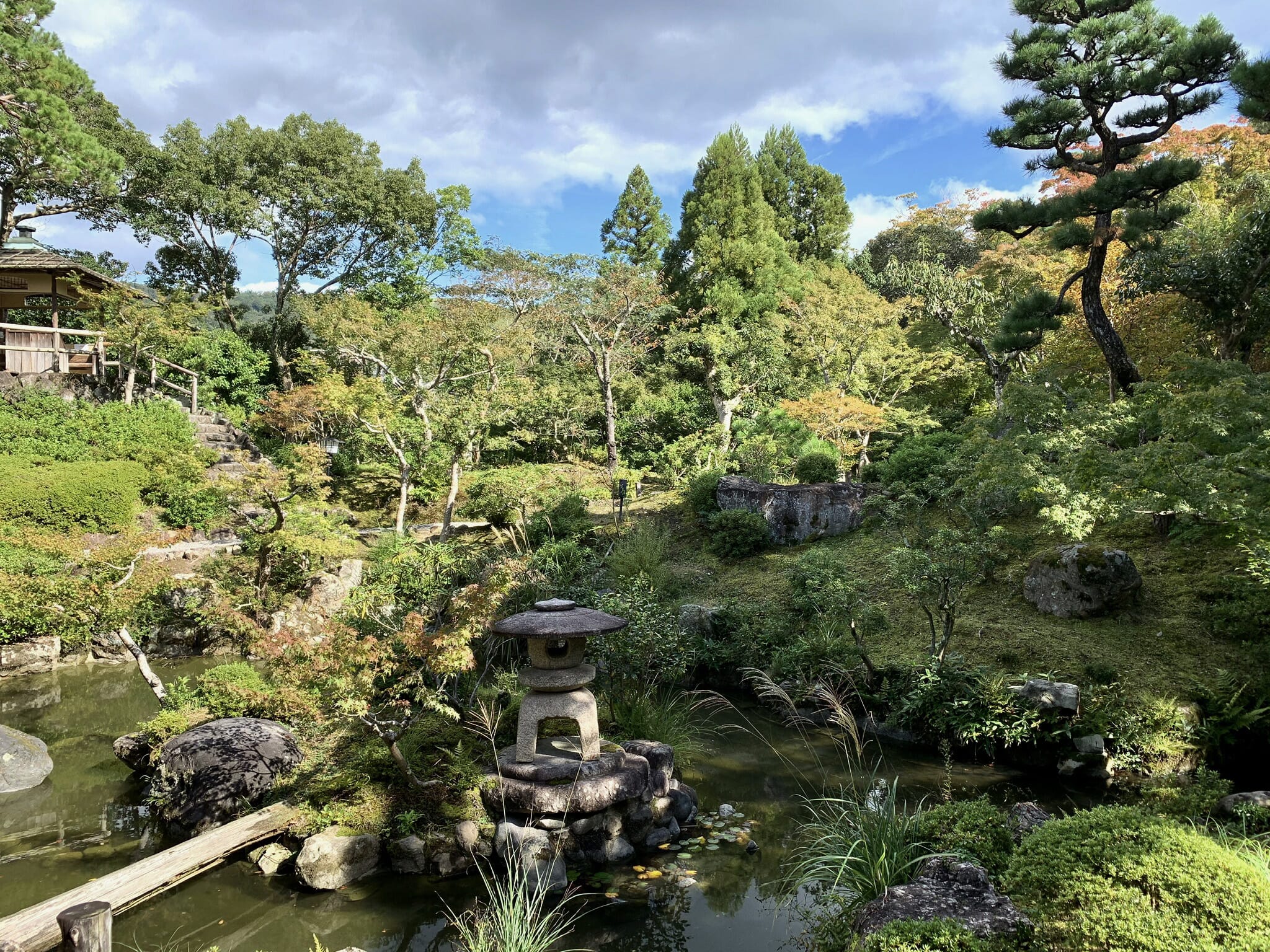
Regardless of where your photographic interests lie, there’s a little something for everyone here. Just be sure to keep a wide-angle lens on hand to capture all the visual magnificence of this ancient city.
7. Hakone
Great for: Nature photography
Distance from Tokyo: 1.5 hrs via Shinkansen/bus transfer
Last but not least, you may want to consider a trip to Hakone if you’re interested in photographing as much of Japan as possible. Hakone itself is a sleepy resort town famous for its hot springs. But don’t let that turn you off – it has some fantastic natural wonders worth exploring.

No trip is complete without a ride on the funicular dangling over Ōwakudani (which translates to “great boiling valley”). The rocky terrain and active sulfuric vents make for an otherworldly scene and some dramatic photography. Unfortunately, the ground itself is closed off to hiking for the time being due to the powerful fumes. But even aerial shots from a safe distance can be pretty spectacular.
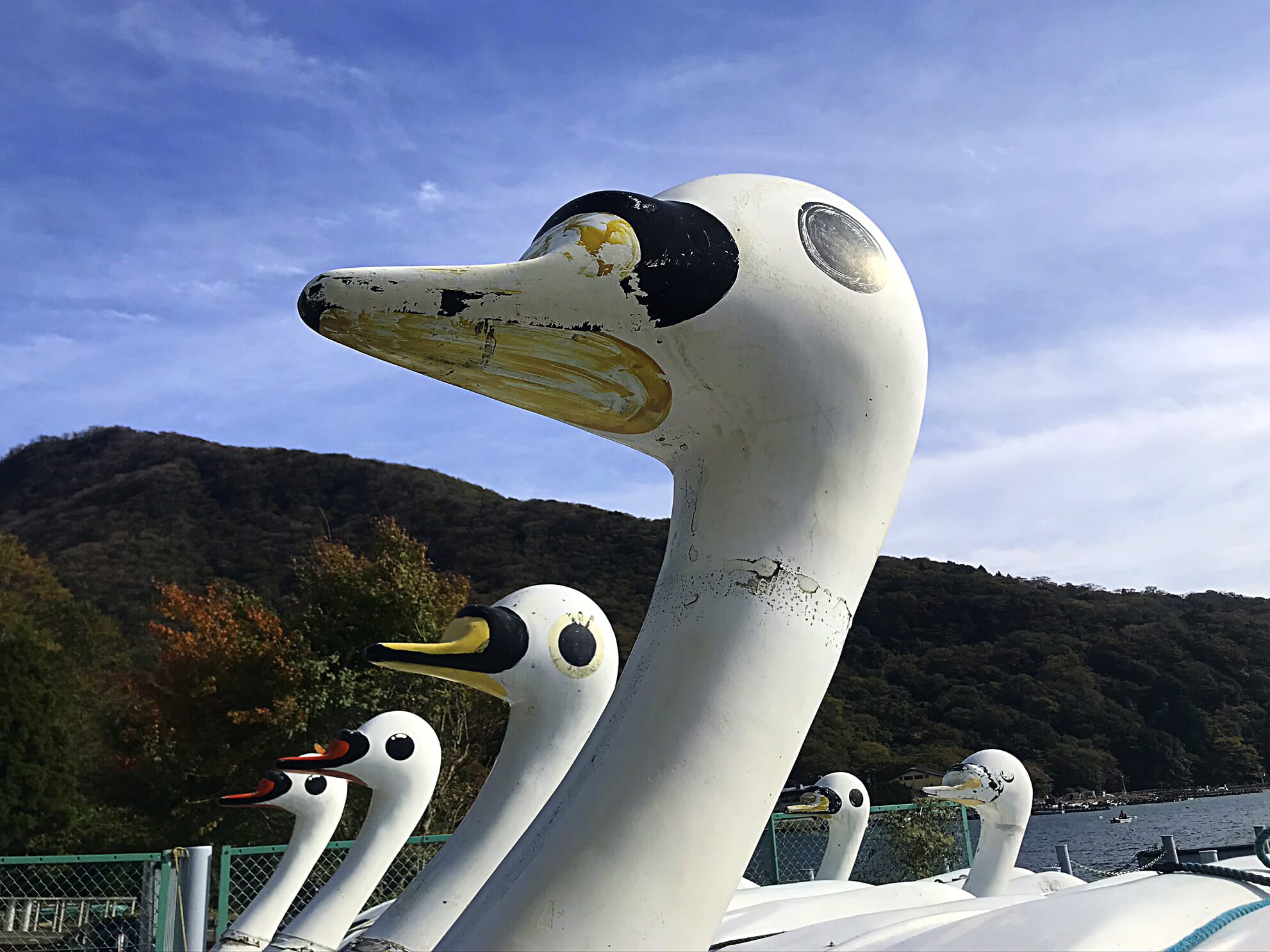
On the other side of the mountain is Lake Ashi, which offers an excellent view of Mt. Fuji among dozens of swan boats. If that’s not your style, check out the Open-Air Sculpture Museum or the local Botanical Garden of Wetlands. In the spring, Hakone boasts spectacular cherry blossoms, while silvergrass blooms in the autumn.
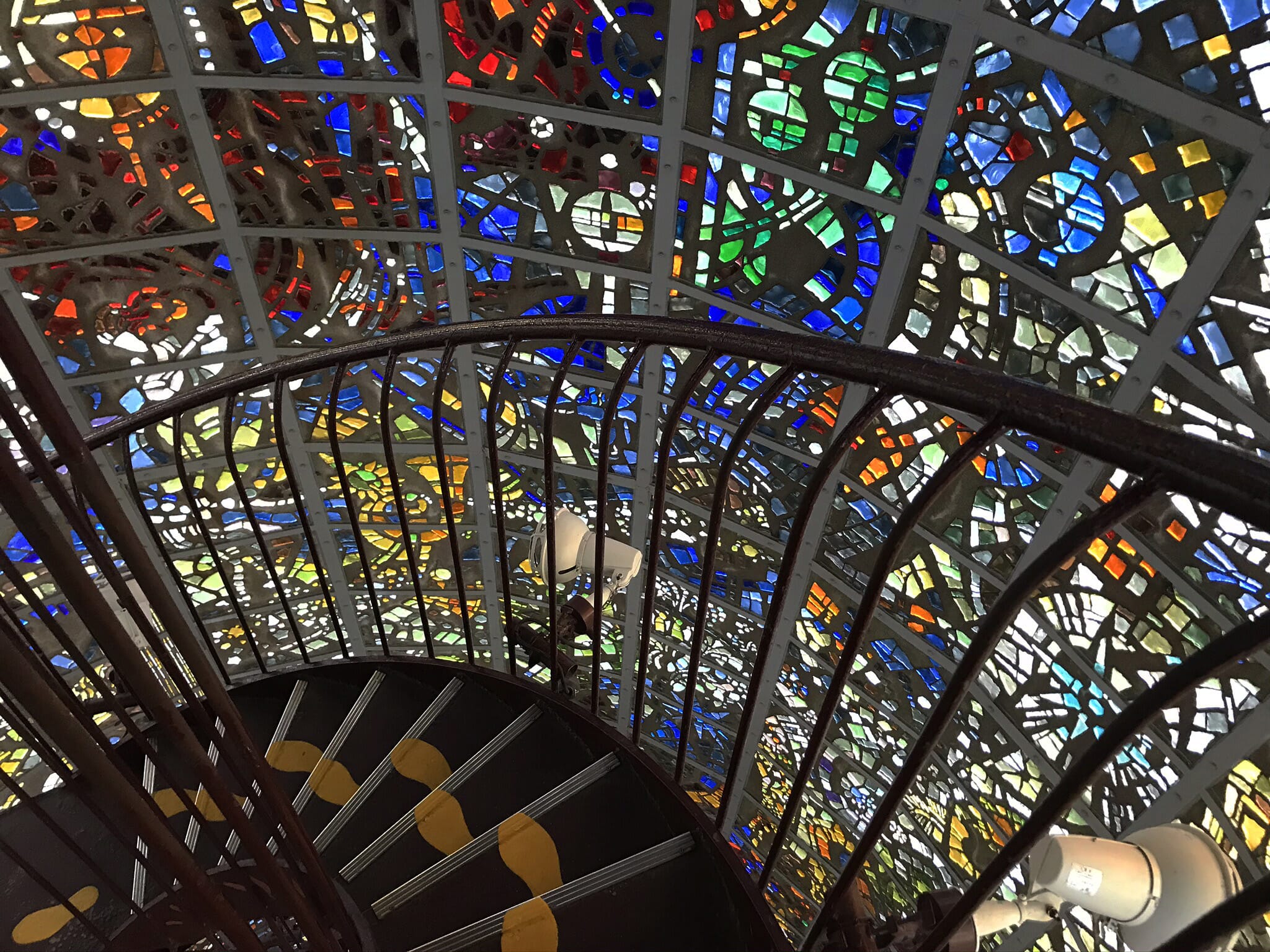
There are dozens of dramatic views waiting just outside your window in this hilly little space. If you find the time, don’t pass up the chance to relax and admire the natural wonders this location has to offer!
Start Planning Your Next Adventure Today!
There’s no denying that photographing Japan is a must on most shutterbug’s bucket lists. It’s bright, beautiful, and at times a little bit bizarre. These elements meld together to make for unique, unforgettable images.
So, if you have the chance to travel to the island, don’t limit yourself to the confines of Tokyo. While there’s a lot to see in the big city, so much lies just a train ride away. Take the extra steps necessary to see it all for yourself!
Are there any must-see spots that we missed? Where would you like to see PhotoWorkout go next? Leave a comment below and let us know!
Bonus Content by Ashlea Wheeler (Mt. Fuji – Best Views):
Mt. Fuji is often depicted in advertisements and social media posts about Japan. As the country’s tallest peak at 3776 meters, it can be seen from many locations on the island of Honshu and spotted from the air when flying into Tokyo’s Haneda Airport from the west.
As Mt. Fuji is situated only 100km from the capital of Tokyo, it can be seen on particularly clear days from the city’s observation decks (such as Tokyo Skytree, Tokyo Tower, Tokyo Metropolitan Government Building, or Bunkyo Civic Center), though this is a somewhat rare occurrence providing only a distant view. Visibility is much better if you travel out of the city to get a closer look at the mountain.
When I visited Japan last year, I traveled to the Fuji Five Lakes district in the hopes of seeing this majestic cultural icon. Unfortunately, I was unsuccessful–it wasn’t visible through the clouds on my summer trip. But I did learn a lot about this mountain and the places from which it can be seen.
If you’re planning to visit Japan on an upcoming photography trip, here are some tips on where you can get the best views of Mt. Fuji!
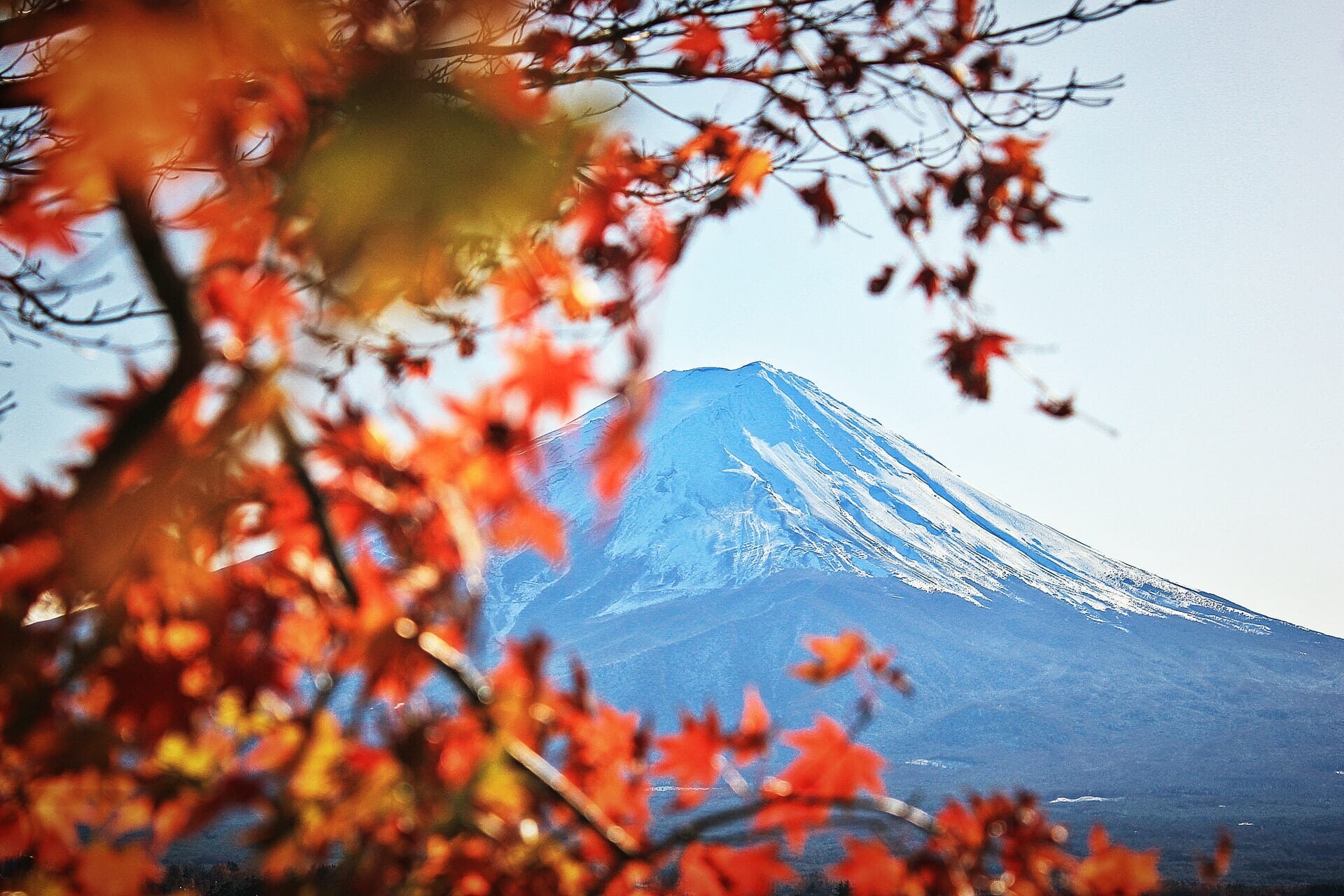
Mt. Fuji Photography Tips
- Despite its massive size, Mt. Fuji is rather elusive. As I discovered, the mountain is frequently covered in cloud and I heard many reports of other travelers who visited Japan with the intention of seeing Mt. Fuji but left disappointed. It’s said that Mt. Fuji is only visible around a quarter of the time, so patience is essential. Spend as many days as you can in the area surrounding the mountain, and expect to deal with short windows of time in which the peak reveals itself.
- Visiting during the winter season will increase your chances of seeing Mt. Fuji. This is generally a better time for visibility as there is less humidity in the air, making the mountain appear clearer, and November to May is usually the time when you will see snow covering its peak. The shoulder seasons also offer good viewing opportunities as you can include the changing colors of spring wildflowers or autumn maple leaves in your shots.
Where to Get the Best Views of Mt. Fuji
- Lake Kawaguchi
- Mt. Fuji Panoramic Ropeway
- Chureito Pagoda
- Oshino Hakkai
- Hakone
- Shizuoka City
- Shibazakura Festival
- Lake Motosu
- Lake Yamanaka
1. Lake Kawaguchi
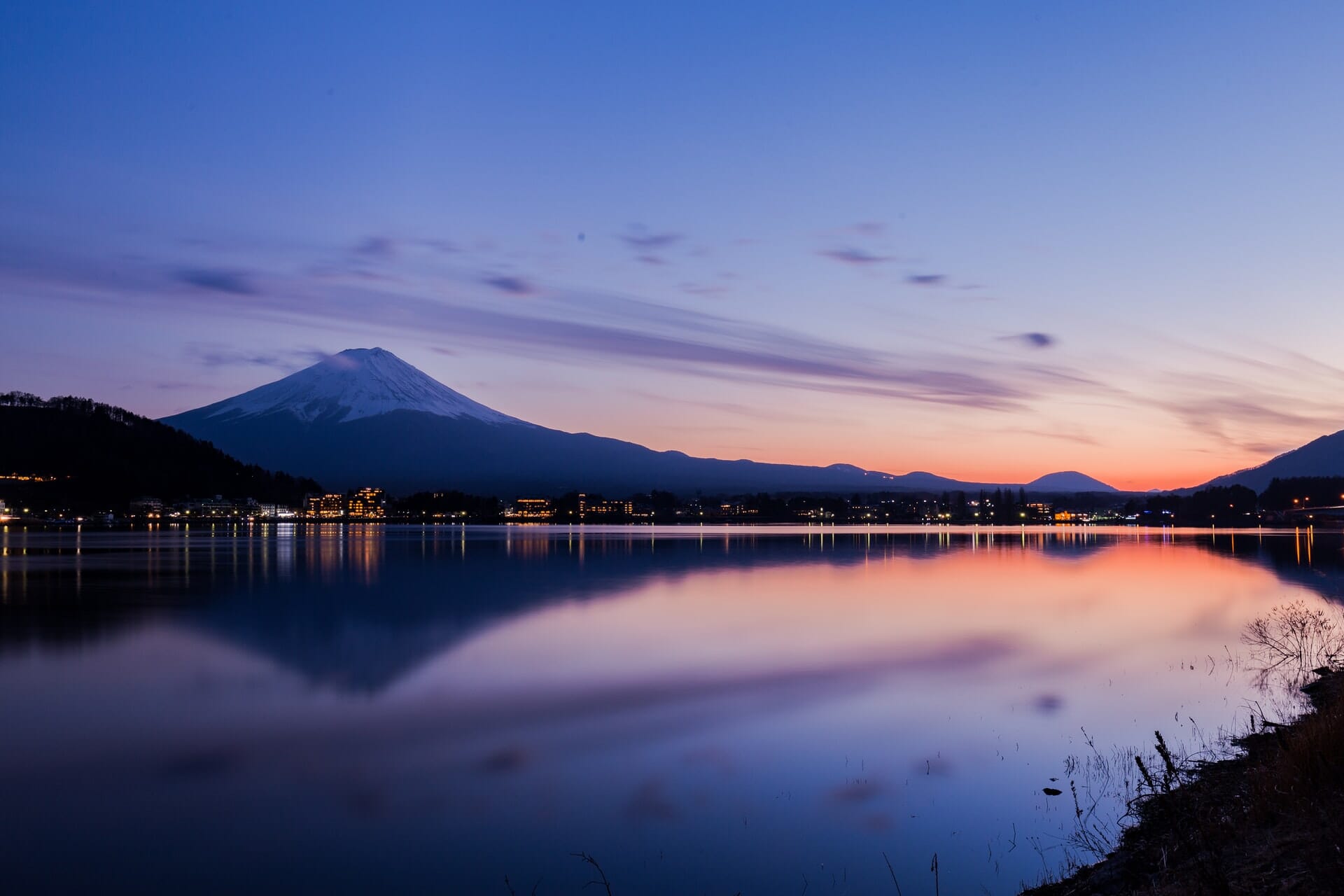
Lake Kawaguchi is one of the most easily accessible destinations to view Mt. Fuji as it’s the most visited part of the Fuji Five Lakes district. A 2 hour train or bus ride will take you from Tokyo to Kawaguchiko Station, which is situated right next to the lake.
The northern shore of Kawaguchi offers excellent views of Mt. Fuji, and on still days you may even be treated to a reflection of the mountain in the water. Take a polarizing filter so that you can reduce glare during the day, or do your photography after sunset in blue hour so that you can capture the changing colors of the sky in the west.
2. Mt. Fuji Panoramic Ropeway
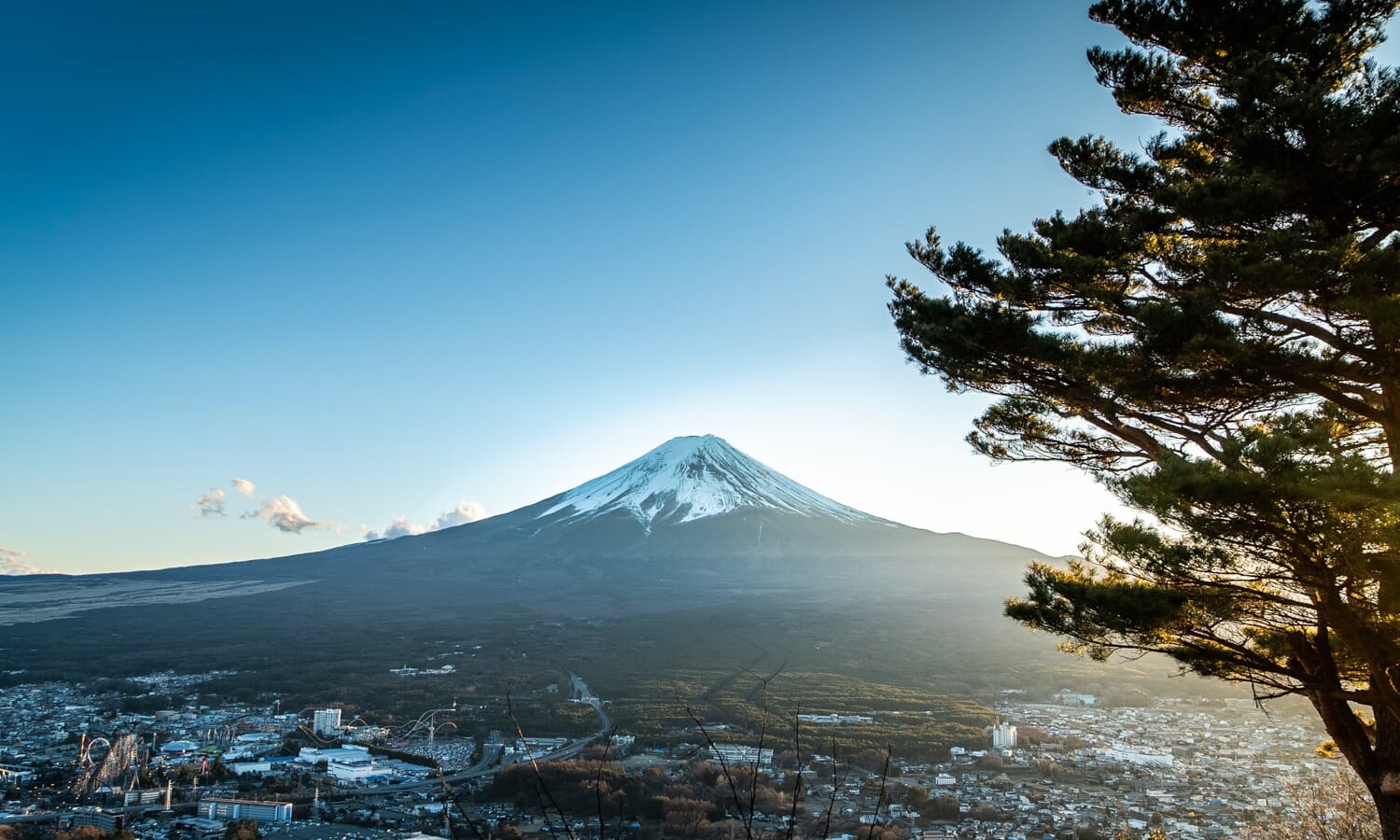
On the eastern shore of Lake Kawaguchi, you’ll find the Mt. Fuji Panoramic Ropeway. This cable car may be touristy, but it does offer a nice elevated view of Mt. Fuji from the observation platform.
The park behind the top ropeway station has a short walking path which travels through the forest to a Shinto shrine. This is a great spot where you can get away from the crowds and use the buildings and native trees to create depth in your Mt. Fuji photos.
3. Chureito Pagoda
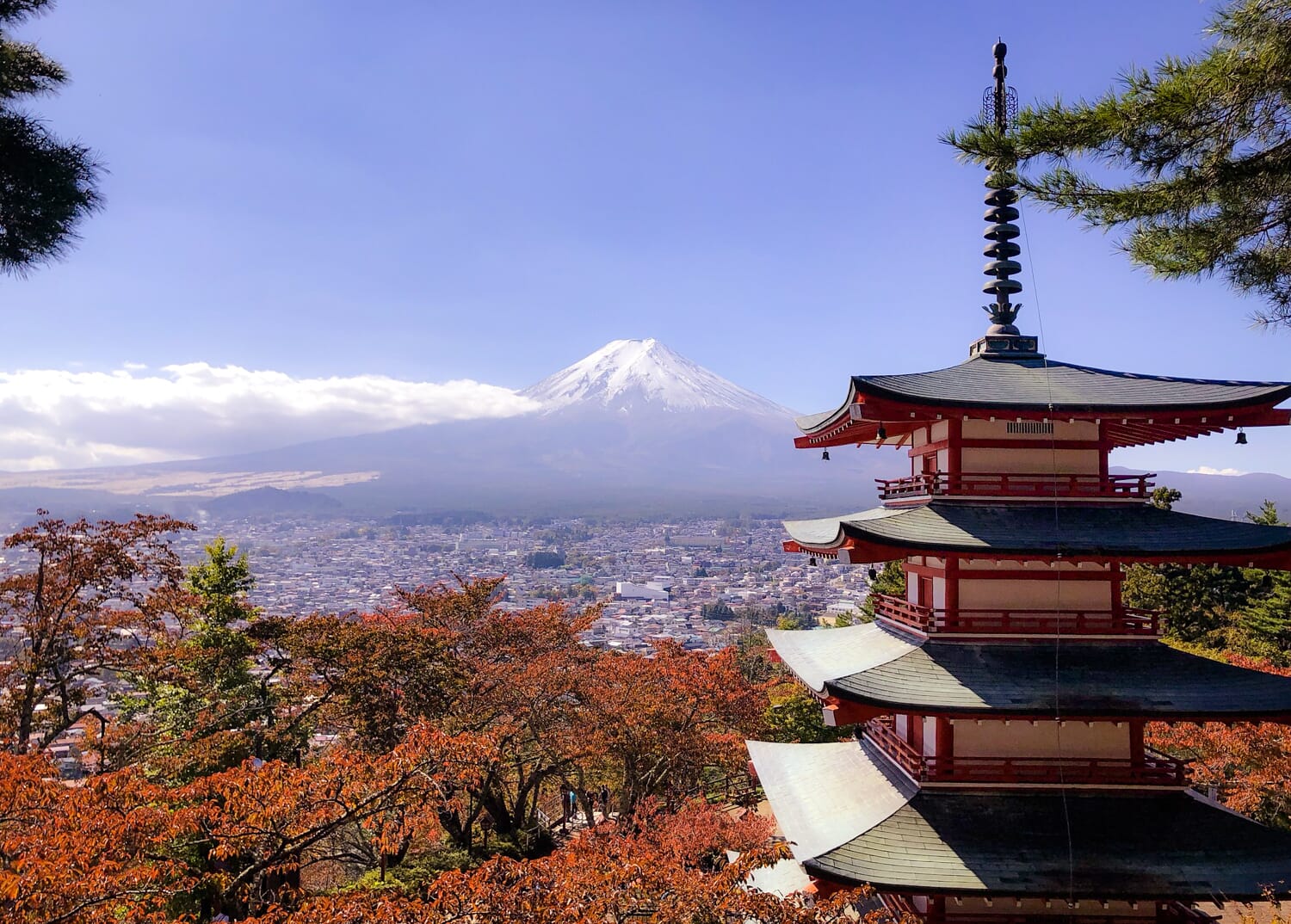
Perhaps the most well-known Mt Fuji photography spot, Chureito Pagoda sits on a hill near Lake Kawaguchi. The 5-story pagoda is decorated in the traditional bright facade and creates a perfect Japanese cultural scene when looking towards Mt. Fuji.
This location is also famous for having trees covered in cherry blossoms as they bloom in spring, or as a destination to see the Japanese maple leaves as they turn in autumn. It’s the perfect place to capture colors in photography.
Related Posts
4. Oshino Hakkai
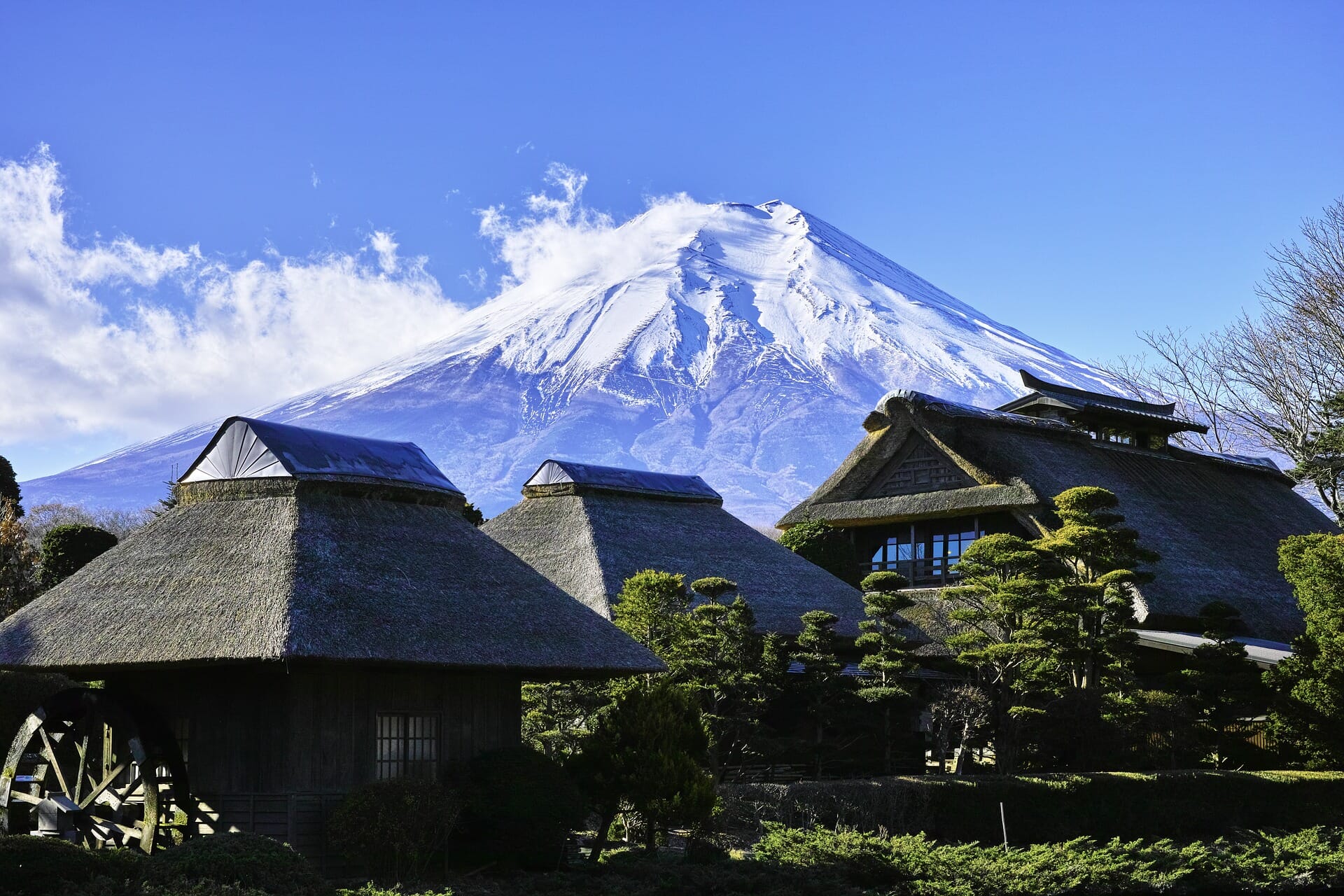
Oshino Hakkai is a picturesque historic village accessible by bus from Kawaguchiko Station. The village is known for having a collection of eight ponds that are filled with snowmelt fed directly from Mt Fuji’s slopes, resulting in pools of crystal clear spring water.
The iconic shot of Oshino Hakkai is taken from the Hannokibayashi Museum, where the views show Mt. Fuji towering behind the thatched roofs of the village. Head to this spot right after the museum opens at 9 am or before it closes at 5 pm to avoid the most crowded part of the day.
5. Hakone
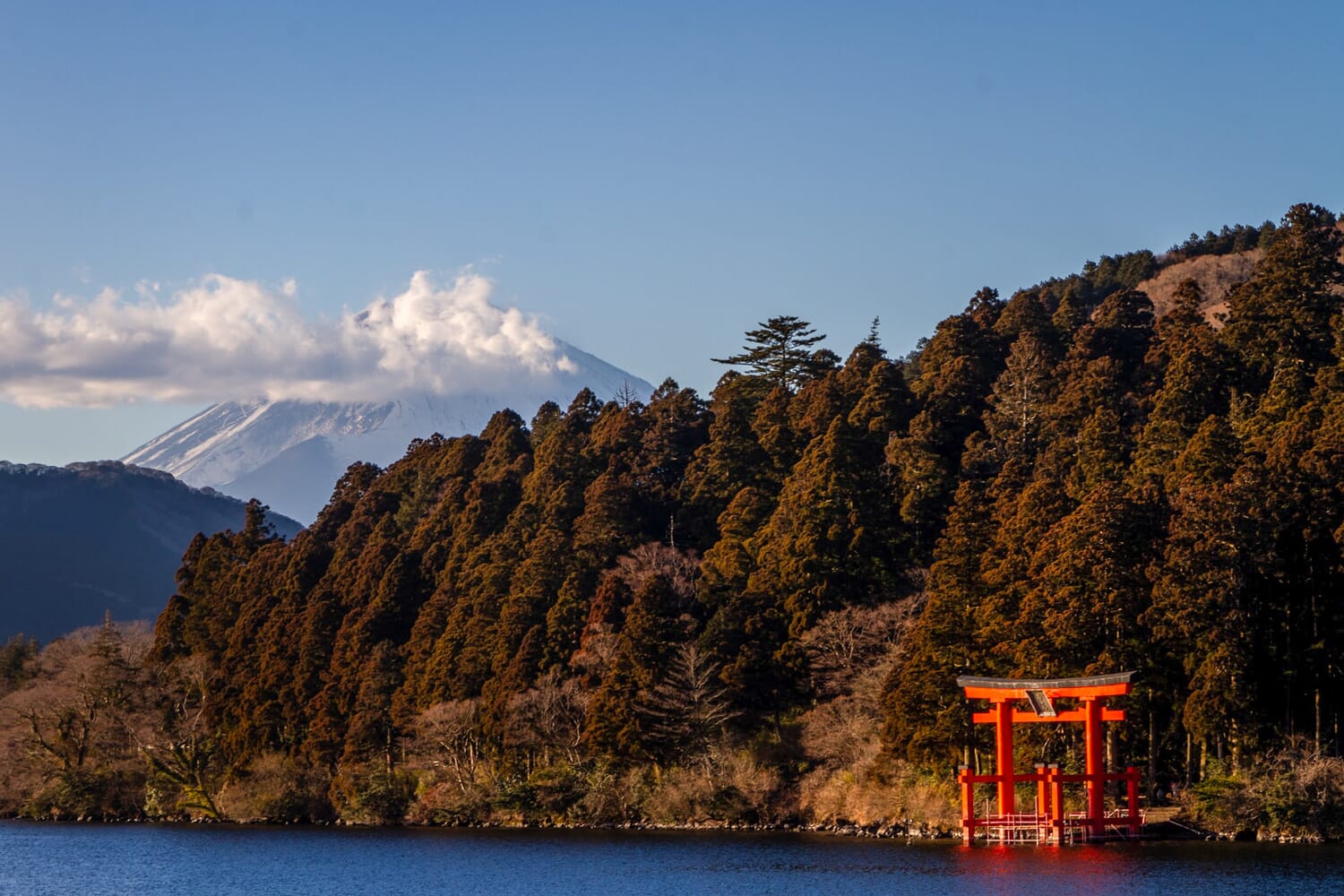
Hakone is a little further from the mountain than some of the other locations on this list, but it remains one of the most popular Mt. Fuji Instagram spots due to its proximity to Tokyo. A steady stream of day-trippers travel from the city to see Mt. Fuji and explore the town.
The most common photo spot is at the southeast edge of Lake Ashinoko and features Mt. Fuji positioned behind the lake with the Torii Gate of the Hakone Shrine sitting beside the lake. The diagonal lines of the shore, hills, and mountains create a pleasant visual flow in photos.
6. Shizuoka City

Shizuoka might not be the most attractive city, but it is a good place to capture Mt. Fuji contrasted with urban Japan. Commuter trains, convenience stores, and street scenes are just a few of the things that could be photographed here with Mt. Fuji standing proud in the background.
Some of the popular spots for viewing Mt. Fuji are Miho Beach where you can capture the distant mountain behind a pebbled shoreline, and Nihondaira for views over Shizuoka City and Suruga Bay as they stretch out towards Mt. Fuji.
7. Shibazakura Festival
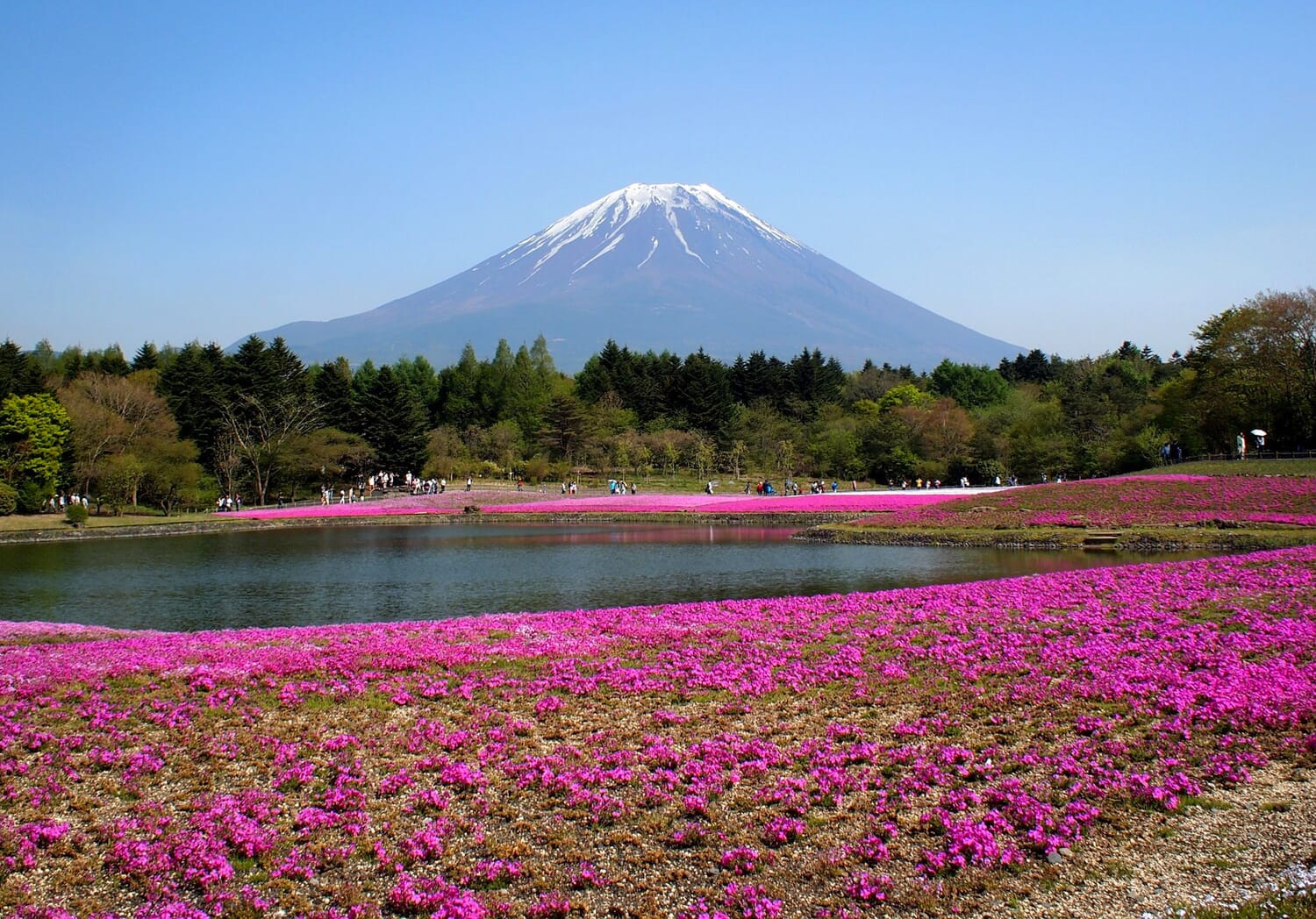
You’ll have to travel between mid-April and early June to sneak this photo spot into your schedule, but it’s definitely worth planning your trip around it–the Shibazakura “Pink Moss” festival is surely one of the most delightful things you’ll see. Peaking in the first 3 weeks of May, the ground at this Mt. Fuji photo spot is covered by vibrant pink phlox moss.
Shibazakura is held on the festival site near Lake Motosu and it can get very busy with tourists and photographers, especially during the Golden Week holiday period. Head over in the early mornings to beat the crowds, or in the late afternoons for the best lighting conditions.
8. Lake Motosu
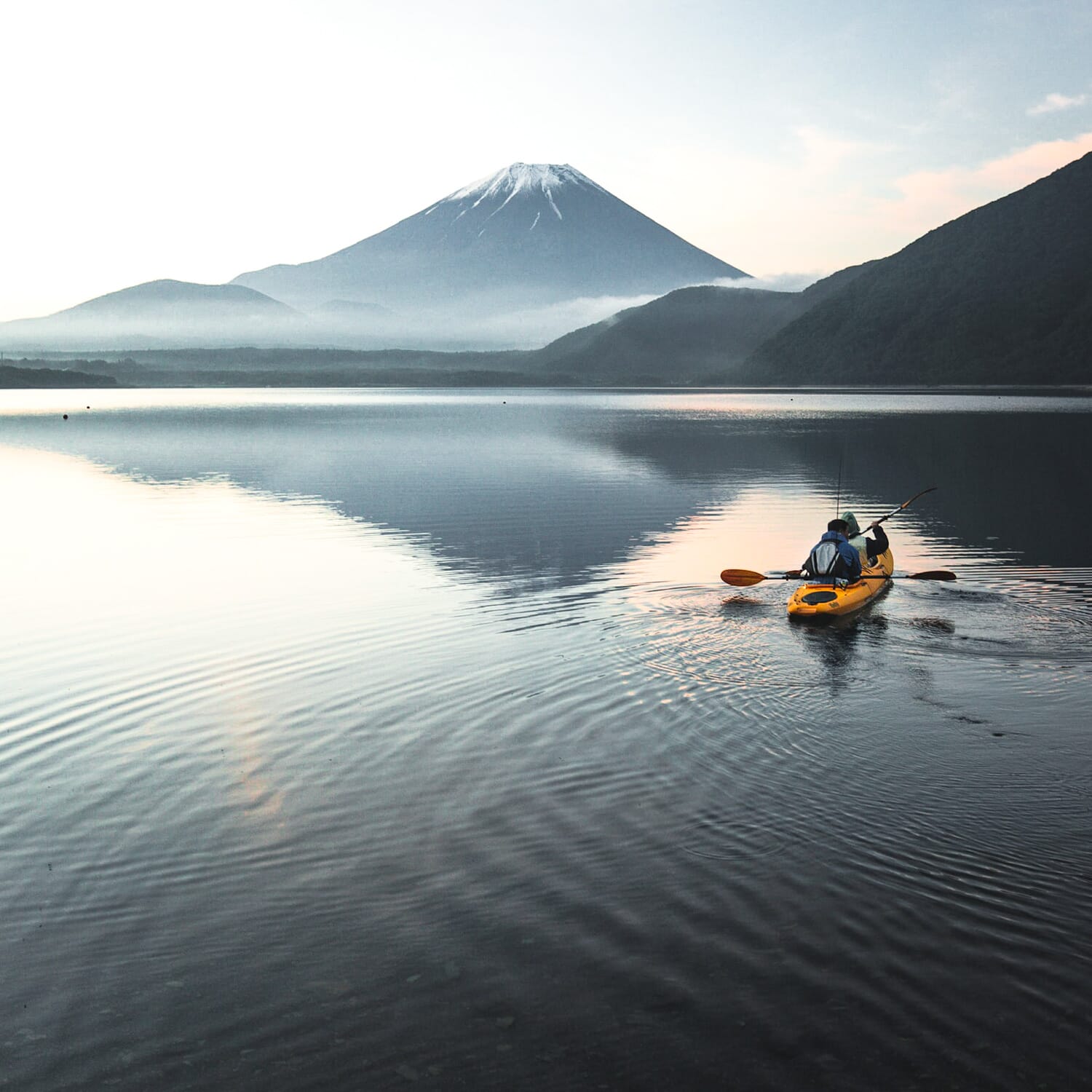
The vista of Mt. Fuji from Lake Motosu is so greatly admired that it features on the back of the Japanese 1000 yen bill. This spot is not so easy via public transport, but you can drive to the viewpoint situated at the northwest corner of the lake.
The area surrounding Lake Motosu is generally underdeveloped, so it’s a great area to capture Mt. Fuji with a surrounding landscape of natural scenery.
9. Lake Yamanaka

Lake Yamanaka is one of the best places to see the amazing ‘Diamond Fuji’. Between October and February each year, people travel to the lake’s shore to a position where the sun will set directly behind the cone of Mt. Fuji.
Related Posts
This phenomenon attracts plenty of photographers who are interested in capturing the light beams and glow of the sun behind the mountain. Shooting into the sun can be tricky, so read up on the relevant camera settings and photography tips before heading out to capture Diamond Fuji.
